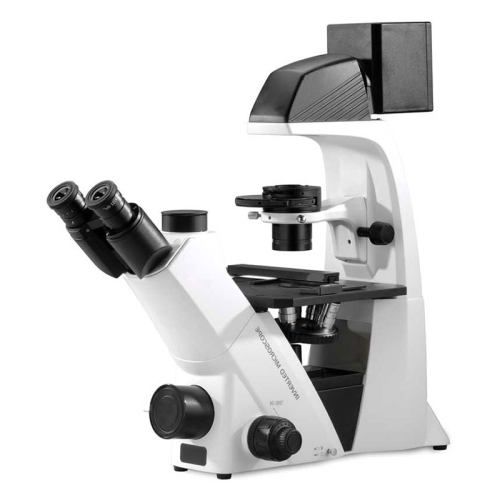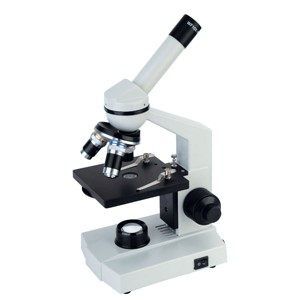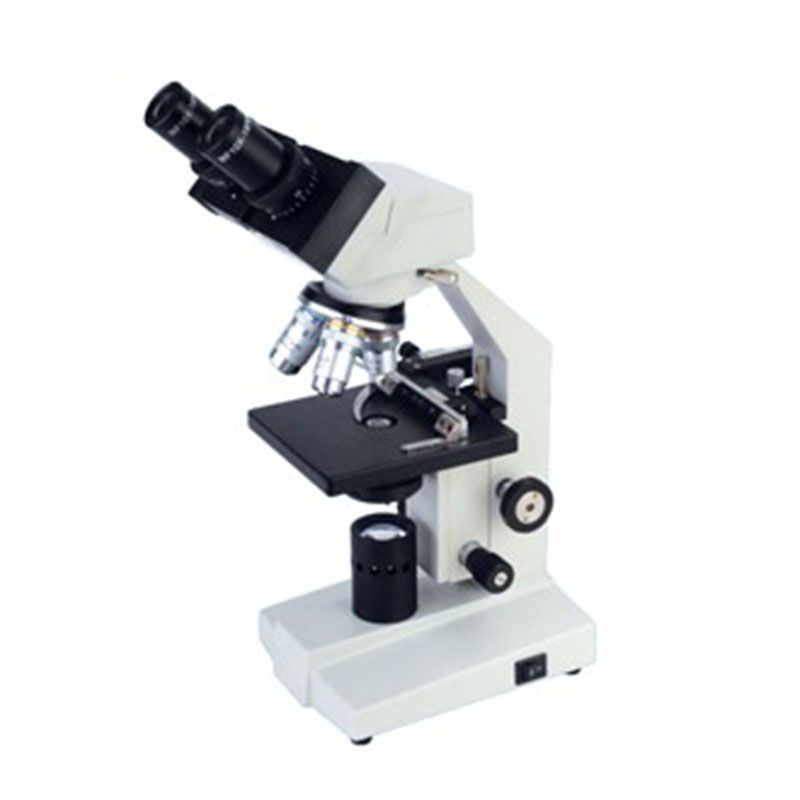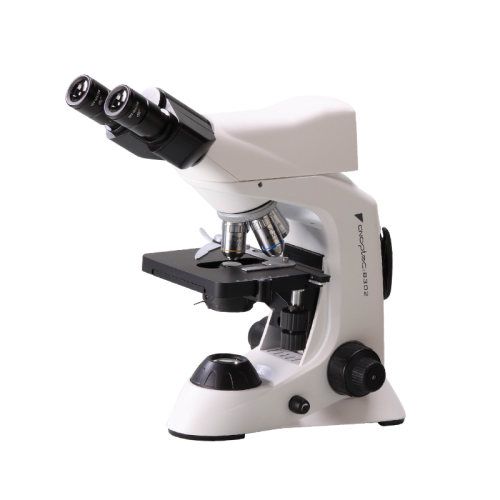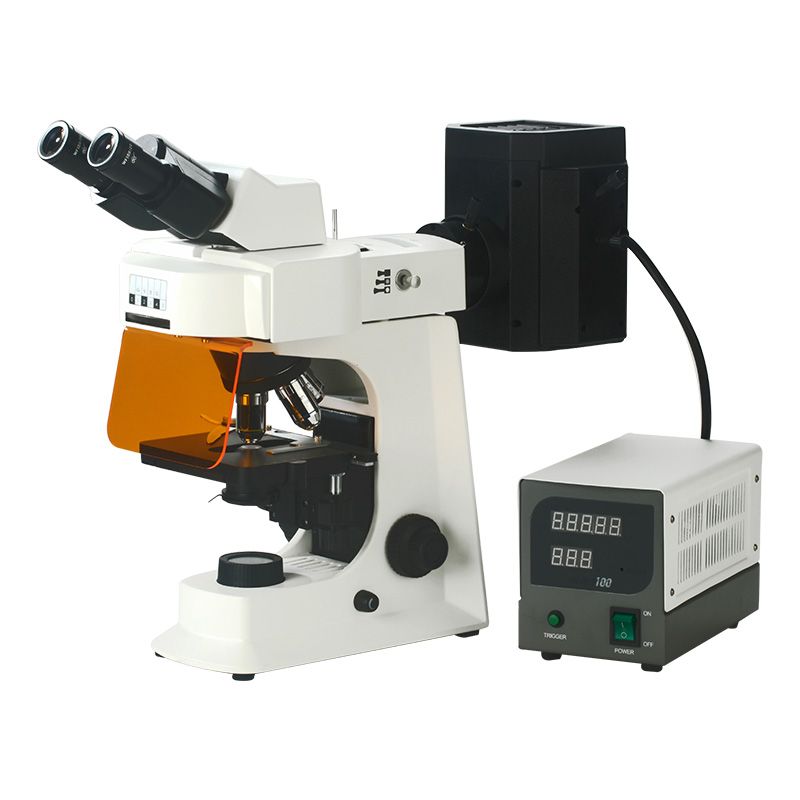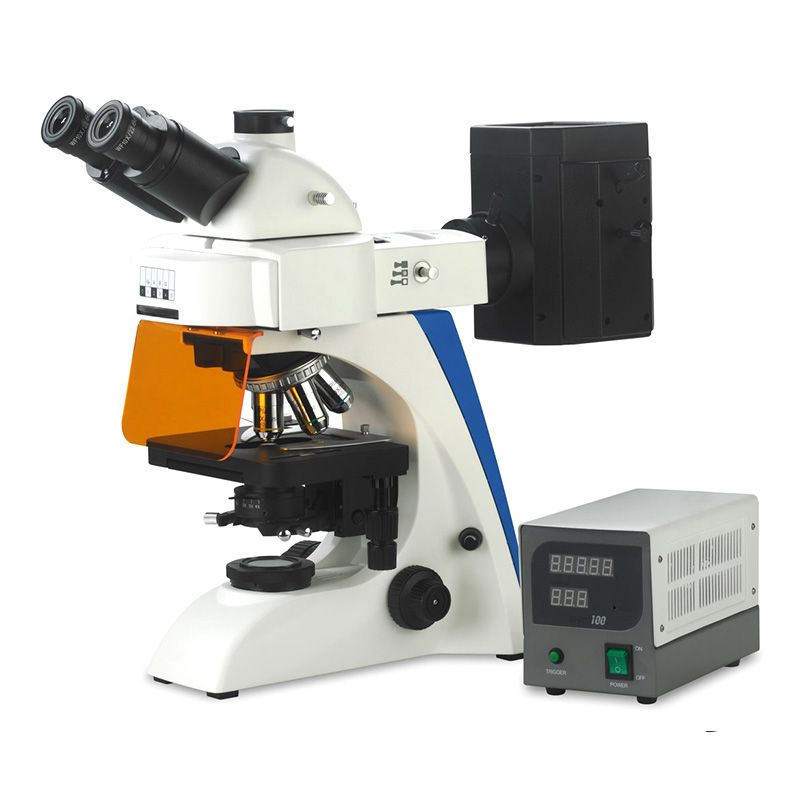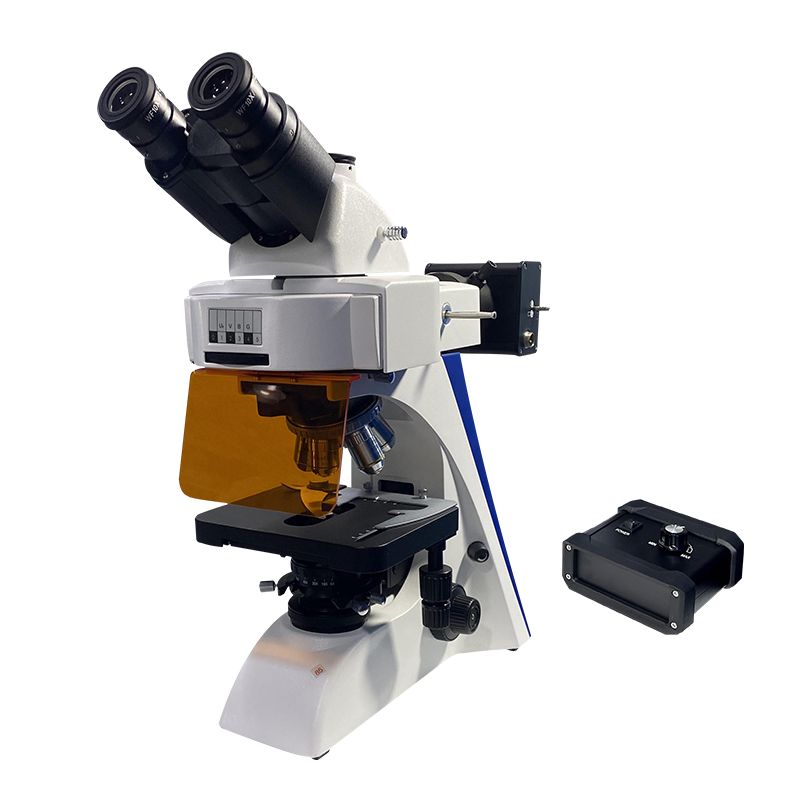Microscope lenses are essential for enlarging small specimens and displaying their minute details. The central part of any microscope system is these lenses, frequently made up of several expertly crafted glass elements. Their state and quality directly affect the microscope’s overall performance, resolution, and clarity. Maintaining the integrity of microscope lenses and guaranteeing the precision of scientific observations depend on proper cleaning and maintenance.
What are the Different Types of Microscope Lens?
Microscope Objective Lens
Multiple lenses make up the objective lens, which is used to magnify objects and project larger images. Lenses with various magnifications, such as 4 ×, 10 ×, 40 ×, and 50 ×, can be installed depending on the focal length. The objective lens’s performance indicators include working distance and numerical aperture in addition to magnification. The refractive index of the light that passes through the lens varies with wavelength, resulting in chromatic aberration or “oozing.” To prevent color differences, the following lenses have been developed:
- Achromatic lens: Lenses of this kind are used to maintain the consistency of refractive index between two colors or wavelengths of light. This kind of lens is popular, in part because of its affordable price.
- Apochromatic lens: Three different wavelengths, or colors, of light, are maintained constant in refractive index with this kind of lens. This kind of lens is typically employed in scientific research domains that call for close observation because of its large numerical aperture and good resolution.
- Plan lens: This kind of lens’s field distortion is adjusted, resulting in focused areas at both the center and periphery. The word “PLAN” is typically written on the side of the lens.
- Semi-apochromatic lens: Three different light wavelengths, or colors, are maintained constant in their refractive indices with the use of this kind of lens. This kind of lens is appropriate for fluorescence observation because it possesses the transmittance needed to observe ultraviolet light, which has a wavelength of about 340 nm.
- Immersion lens: This kind of lens can achieve higher resolution by increasing the numerical aperture by putting liquid between the objective lens and the specimen.
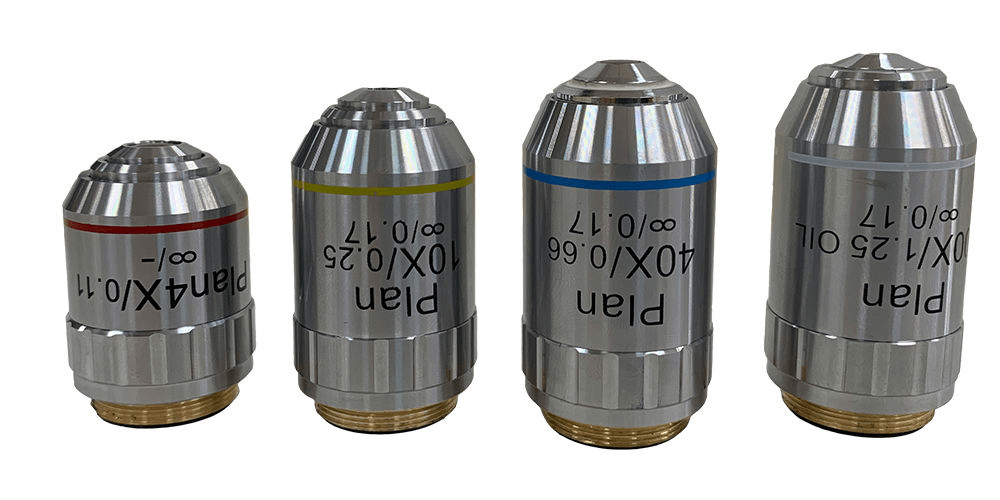
Microscope Eyepiece
Installed on the observer’s side is a lens called an eyepiece. The objective lens enlarges the image, and the eyepiece adds more magnification to make observation easier. The shorter the eyepiece, in contrast to objective lenses, the higher the magnification. Depending on the structure or application of the field of view diaphragm, the following lenses can be installed:
- Periplan lens: This kind of lens can achieve clean observation by correcting for chromatic aberration in magnification and other features even around the field of view.
- Huygens lens: Two flat-convex lenses combine to form the Huygens lens. This kind of lens, which has a field of view diaphragm inside the lens barrel, is intended for low magnification observations.
- Ramsden lens: This kind of lens is distinguished by the fact that the field of view aperture is external to the lens barrel.
- Compensation eyepiece: An eyepiece made especially for apochromatic lens use. Owing to the advent of new flat image eyepieces, compensating eyepieces are becoming less common in use because of their extremely sharp image field curvature.
- Wide field of view lens: This kind of lens is primarily used for observing minerals and organisms because it can achieve a wide field of view.
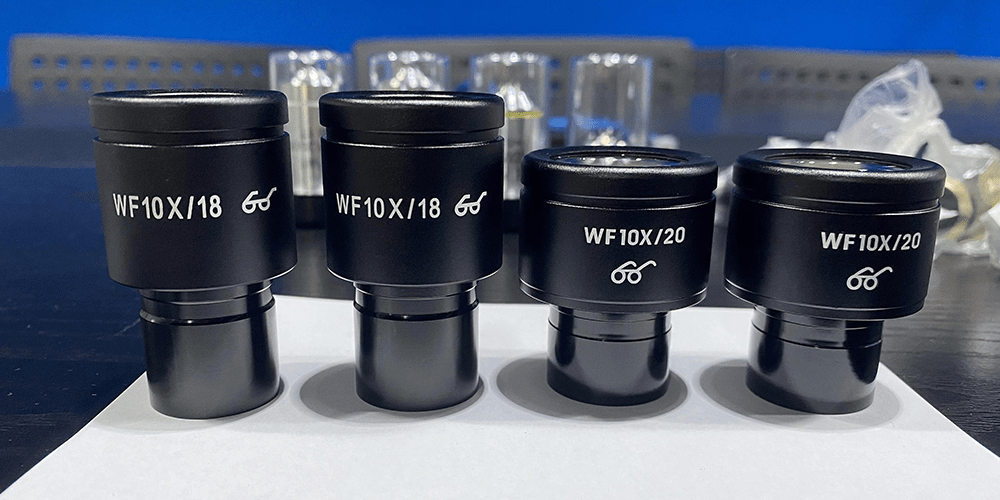
Microscope Condenser
A lens positioned beneath the stage is called a spotlight. To evenly light an object, a spotlight can be adjusted in intensity. This kind of lens works well for observations with a high magnification. There are several kinds of spotlight lenses, such as regular “Abbe spotlights” and “achromatic spotlights” for color correction.
- Achromatic and spherical aberration condenser: It is made up of several lenses that can produce perfect images and have a high degree of chromatic and spherical aberration correction. With a NA value of 1.4, it is the best condenser in the bright field Microscope.
- Abbe condenser: The Abbe condenser is capable of sharp focus and is composed of two lenses. However, chromatic and spherical aberration will be visible if the objective lens’s numerical aperture is greater than 0.60. It is therefore frequently used with regular microscopes.
What is the Cleaning Procedure for Objective Lenses or Eyepieces?
- Remove Dust: Unplug and turn off the microscope. To gently remove any dust particles from the objective lenses or the eyepieces, use compressed air.
- Apply Cleaning Solution: Using a lint-free lens cleaning wipe, dab a tiny bit of lens cleaning solution on it. Refrain from putting the solution straight onto the lens.
- Wipe the Lens: Use light pressure and gently wipe the lens surface in a circular motion. The lens may get scratched if you scrub or rub at it. The area where your eye meets the eyepieces should receive special attention.
- Inspect and Repeat: Check for any lingering dirt or smudges on the lens. Use a new lens cleaning wipe to carry out the wiping procedure again if needed.
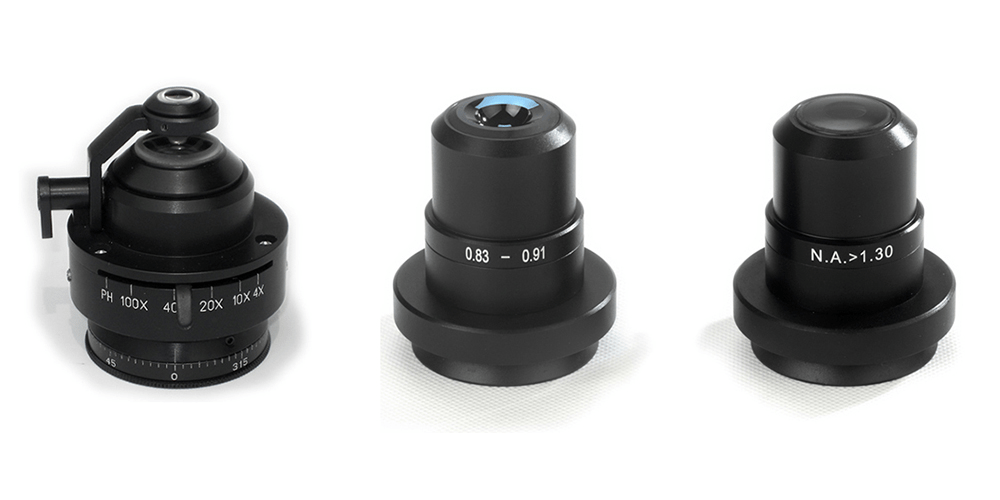
Conclusion
To get the most out of your microscope and extend its life, you must be aware of the different kinds of lenses and how to clean them. Certain kinds of lenses, like objective and eyepiece lenses, have specific purposes and call for particular cleaning techniques. The objective lenses, which enlarge the specimen, need to be carefully cleaned to prevent distortion or blurriness. To ensure clear visibility, the eyepiece lenses—which are used to view the magnified image—also require careful cleaning. To remove dust and debris from lenses without harming their delicate surfaces, proper cleaning methods include using compressed air, lint-free wipes, and lens cleaning solutions. Chongqing Scope Instrument Co., Ltd. is committed to the export trade of laboratory instruments. Please contact us for more information.
